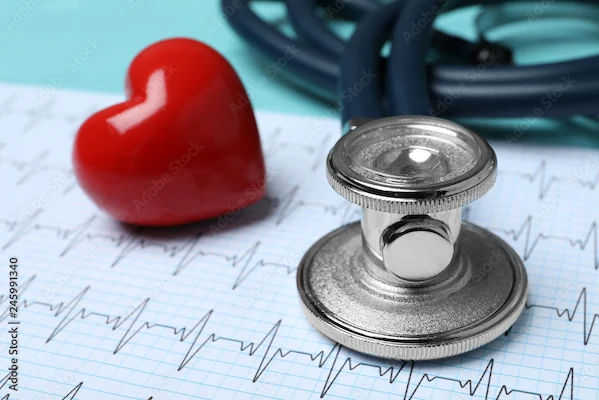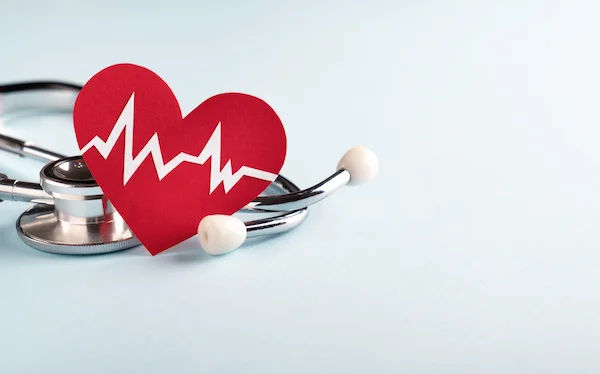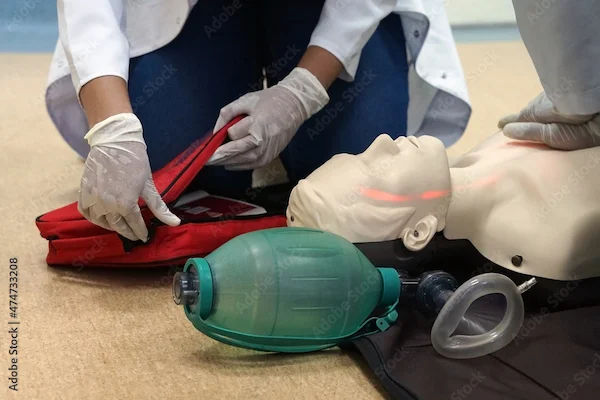Understanding Arrhythmia: Causes, Symptoms, and Management
Explore this comprehensive guide to arrhythmia, including its types, symptoms, risk factors, diagnosis, treatments, and strategies for living with this heart rhythm disorder.

Written by
Last updated on 3rd Jul, 2025
Arrhythmia is a medical condition that leads to an irregular heartbeat, too fast or too slow. An arrhythmia results from the heart's electrical system malfunctioning. The normal rhythm of the heartbeats is regulated by the electrical signals. These signals ensure synchronised contractions in a normal heart. The signals are disturbed when, in some cases, the heart beats fast, slow, or irregularly.
Learning about this condition may help the person recognise any symptoms and possibly get help, treat the condition, and maintain a healthy heart.
Continue reading for more information on the management of Arrhythmia.
Types of Arrhythmia
Different arrhythmias can interact with heart function differently. Some arrhythmias are shallow and harmless. Others are fatal and need emergency medical care.
1. Tachycardia
Tachycardia is an abnormal heart rhythm in which normally more than 100 beats per minute occur because of electrical impulses produced in either the upper or lower chambers of the heart with succeeding and fastened contractions. Key characteristics of tachycardia are:
Originates in atrial or ventricular heart chambers
Can be triggered by stress, exercise, or underlying health conditions
May cause symptoms like dizziness and chest discomfort
Potentially dangerous if left untreated
2. Bradycardia
Bradycardia is a low heart rate lower than the resting average heart rate, usually under 60 beats per minute. Bradycardia is also an extremely complicated condition that originates either due to complications from paretic conditions or physical conditions. Key characteristics of bradycardia are:
Reduced heart rate below standard medical benchmarks
Can indicate underlying heart conduction system problems
May cause fatigue, weakness, and dizziness
Sometimes normal in athletes with excellent cardiovascular fitness
3. Atrial Fibrillation
Atrial fibrillation is characterised by rapid, irregular electrical signals in the heart's upper chambers. This condition disrupts normal heart function and increases stroke risk. Key characteristics:
Irregular and often rapid heart rhythm
Potential complications include blood clot formation
Higher risk of stroke and heart failure
Can be persistent or intermittent
4. Ventricular Arrhythmia
Ventricular arrhythmias originate in the heart's lower chambers and can be particularly dangerous. These rhythm disorders can potentially interrupt normal heart pumping and lead to life-threatening situations. Key characteristics:
Electrical signal disruptions in ventricles
Can cause sudden cardiac arrest
May result from heart disease or structural abnormalities
Requires immediate medical attention
Causes of Arrhythmia
Arrhythmia stems from multiple interconnected factors affecting heart function. Electrical signal disruptions can arise from physiological, environmental, and lifestyle-related influences. Heart structure, genetic predisposition, underlying medical conditions, and external triggers contribute to rhythm abnormalities. Understanding these diverse causes helps medical professionals develop targeted treatment strategies and prevention approaches.
1. Heart-Related Causes
Heart-related causes of arrhythmia involve structural and functional cardiovascular changes that disrupt normal electrical signal transmission. These underlying conditions compromise heart health and rhythm regulation.
Key factors are:
Coronary artery disease
Heart attack scarring
Heart valve disorders
Congenital heart defects
Previous cardiac surgeries
2. Non-heart Related Causes
Non-heart-related causes encompass systemic conditions and external factors that indirectly impact heart rhythm. These influences can trigger electrical signal irregularities through complex physiological mechanisms.
Key factors are:
Hormonal imbalances
Psychological stress
Certain medications
Electrolyte disturbances
Autoimmune disorders
3. Environmental Factors
Environmental factors can provoke arrhythmia by stimulating the heart's electrical system or inducing physiological stress responses. Key triggers:
Extreme temperature variations
High altitude exposure
Caffeine consumption
Alcohol intake
Intense physical exertion
Symptoms and Warning Signs
Arrhythmia symptoms can be mild and innocuous, while others become fatal. With the early warnings, one may be able to intervene early on and manage his or her cardiovascular health appropriately.
Common arrhythmia symptoms provide initial indications of potential heart rhythm irregularities. These manifestations differ among individuals and can fluctuate in intensity and frequency:
Heart palpitations
Chest discomfort
Dizziness
Mild breathlessness
Temporary weakness
Severe arrhythmia symptoms demand immediate medical attention. These critical indicators suggest potentially dangerous heart rhythm disruptions that could lead to life-threatening complications:
Prolonged chest pain
Severe breathlessness
Fainting episodes
Profound weakness
Sudden loss of consciousness
Risk Factors
Several risk factors increase the chances of contracting an arrhythmia. Certain individuals inherit genetic traits that make them more prone to heart rhythm disorders. Lifestyle factor that causes arrhythmia are:
Sedentary lifestyle
Poor diet
Excessive alcohol consumption
Smoking
Chronic stress
Pre-existing health conditions that are responsible for Arrhythmia:
High blood pressure
Diabetes
Obesity
Sleep apnea
High cholesterol
Diagnosis and Evaluation
Healthcare experts use a combination of methods to detect an arrhythmia. This starts with a detailed medical history and physical examination.
Doctors gather detailed information about symptoms and medical background through the following ways:
Review of current symptoms and their frequency
Family history of heart conditions
Current medications and supplements
Past medical procedures or surgeries
Lifestyle factors like diet, exercise, and stress levels
Physical examination of heart sounds and pulse
Several tests can help healthcare experts better comprehend the electrical activity and functionality of the heart.
Electrocardiogram (ECG) for basic heart rhythm assessment
Holter monitor for 24-48 hour continuous monitoring
Event recorder for occasional rhythm problems
Echocardiogram to view heart structure
Blood tests to check electrolyte levels
Stress tests to evaluate heart function during exercise
Tilt table test for fainting evaluation
Get Your Heart Health Checked
Treatment Options
Different treatment approaches are used based on the type and severity of arrhythmia. Healthcare providers develop personalised treatment plans. These plans often combine different approaches for optimal results.
Medications play a crucial role in managing arrhythmia. Different drugs target specific aspects of heart rhythm control:
Antiarrhythmic drugs to regulate heart rhythm
Beta-blockers to slow heart rate
Blood thinners to prevent clots
Calcium channel blockers for rate control
Anticoagulants for stroke prevention
Some patients require medical procedures when medications aren't sufficient. These interventions can provide long-term solutions:
Cardioversion to reset the heart rhythm
Catheter ablation to treat irregular pathways
Pacemaker implantation for slow rhythms
Implantable cardioverter-defibrillator (ICD)
Maze procedure for atrial fibrillation
Coronary bypass surgery when needed
Changes in daily habits can significantly impact arrhythmia management. These modifications support overall heart health:
Regular exercise
Stress management
Healthy diet
Limiting alcohol and caffeine
Quitting smoking
Prevention Strategies
Prevention focuses on maintaining heart health and reducing risk factors. Early intervention can prevent or minimise arrhythmia development. A healthy lifestyle forms the foundation of arrhythmia prevention. Following are the daily choices that impact heart health significantly:
Regular moderate exercise
Mediterranean-style diet
Stress management practices
Adequate sleep (7-9 hours)
Weight management
Limited alcohol consumption
Consistent medical supervision helps track heart health. Suggested procedures are:
Annual physical examinations
Regular blood pressure checks
Cholesterol level monitoring
Heart rhythm screening
Blood sugar testing
Discussion of new symptoms
Living with Arrhythmia
Living with arrhythmia requires ongoing attention to health management. Patients can maintain a good quality of life with proper care. Emotional and practical support helps manage daily challenges.
Below are a few suggested coping strategies:
Join support groups
Practice stress reduction
Maintain regular routines
Learn emergency procedures
Educate family members
Keep medical information accessible
Long-term success requires consistent attention to health maintenance. Regular monitoring helps prevent complications.
Here are a few tips for long-term management:
Follow medication schedules
Attend all medical appointments
Monitor symptoms daily
Maintain emergency plans
Track triggers and patterns
Update medical information regularly
Conclusion
Arrhythmia is a complex but manageable heart condition. Early detection, proper medical guidance, and lifestyle modifications can significantly improve patient outcomes. Individuals experiencing persistent heart rhythm irregularities should consult healthcare professionals for personalised evaluation and treatment.
Consult Top Cardiologists
Consult Top Cardiologists

Dr. Tripti Deb
Cardiologist
40 Years • MBBS, MD, DM, FACC, FESC
Hyderabad
Apollo Hospitals Jubilee Hills, Hyderabad

Dr. Anand Ravi
General Physician
2 Years • MBBS
Bengaluru
PRESTIGE SHANTHINIKETAN - SOCIETY CLINIC, Bengaluru
Dr Moytree Baruah
Cardiologist
10 Years • MBBS, PGDCC
Guwahati
Apollo Clinic Guwahati, Assam, Guwahati

Dr. Zulkarnain
General Physician
2 Years • MBBS, PGDM, FFM
Bengaluru
PRESTIGE SHANTHINIKETAN - SOCIETY CLINIC, Bengaluru

Dr Nazneen Khan
Cardiologist
7 Years • M.B.B.S, M.D (MEDICINE), DrNB CARDIOLOGY
Pune
Apollo Clinic, Viman Nagar, Pune


.webp)



